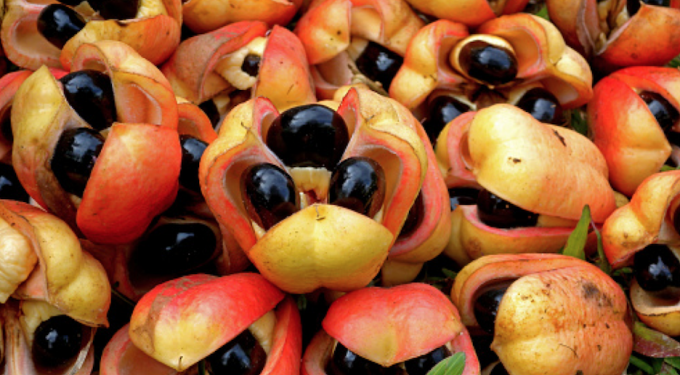Ackee is native to West Africa, but Jamaica has accepted it as its national fruit. Many people enjoy this delicacy and it is a staple in the national dish – ackee and saltfish. But some find it less enticing than others. You only have to look at the different sides of ackee to understand the mixed feeling. Two types are grown locally and can be identified by the colour of their aril (the edible portion of the fruit). Those with a soft yellow aril are butter ackee, and those with a hard aril and cream in colour are called cheese ackee. Let’s dive into the good, bad and ugly sides of ackee.
The Good:
Ackee is versatile
Though the fruit pairs nicely with saltfish, it can be enjoyed in many other ways. Ackee with salt pork, ackee fritters, seasoning rice, ackee dip and ackee stir fry are a few delicious ways to prepare this tropical fruit.
Ackee has healthy fats
Ackee is high in fat, but it’s healthy fats that are not associated with illnesses. Research from the Department of Biochemistry, University of the West Indies, Mona, says 51 to 58 per cent of the dry weight of ackee is fat. The Pan American Health Organization says ackee is an excellent source of healthy fats in the traditional Jamaican diet.
Immune System Booster
Ackee is rich in Vitamin C, which aids in our body's immunity and protects us from various diseases.
The Bad:
Ackee poisoning
Eating unripe ackee can lead to severe vomiting from ackee poisoning. It may even result in seizures, coma and death. Unripe ackee has two types of amino acids, hypoglycin A and hypoglycin B, that cause it to be toxic. These acids are removed naturally when the fruit is harvested and cooked properly. So ackee pods must be left to open on their own.
The Ugly:
Ackee and the prostate
Many males shun ackee because they fear the fruit is bad for the prostate. Some even claim that ackee can cause prostate cancer. There’s no evidence to support such assertions, however, just as there aren’t any to prove that ackee increases one’s chances of developing heart disease or high cholesterol levels.

